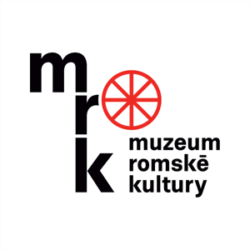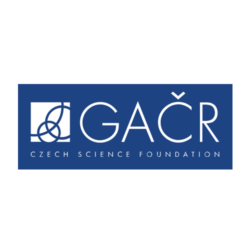Tibor Gombár
Tibor Gombár, born 1922, Pavlovce nad Uhom, Michalovce district
-
Testimony abstract
Tibor Gombár was one of six children, including three sons, the eldest of whom died.[1] His father went begging and made baskets. Tibor Gombár helped him. Because of the many children and the poverty at home he also worked for food for a farmer as what was called a “son of the farm.”[2] Later, when Gombár had learnt the work, he received four thousand Slovak crowns a year. It was from there that Tibor Gombár was conscripted into the army.
- [1] We are not told when.
- [2] A Roma live-in agricultural labourer who worked for Slovak peasants; these were often five- or six-year-old Roma children from poor families, or orphans, working for their board, clothing and lodging. They were often sent into the army by the farmers, sometimes allegedly in place of the farmer’s actual son, a fact confirmed by other Roma and local Slovaks; Roma girls served as maids; when they returned home from the farmers around the age of fifteen, a marriage would be arranged with their male Roma contemporaries. (ed.)
In 1941 Tibor Gombár was with the Slovak Army in the Soviet Union, where they were captured by the Cossacks who killed their captain Jaroslav[1] and took the prisoners to a camp in Buzuluk. Gombár spent two or three months there, and described the misery, digging trenches, and the lice in lodgings shared with Germans, Hungarians, Romanian, Poles. He himself was in a platoon with other Roma.
He said that as well as Ludvík Svoboda there was also Klement Gottwald, Edvard Beneš and Gustáv Husák, who established the First Czechoslovak Army Corps. Gombár was supposed to become a paratrooper but was unable to overcome his fear and so underwent training as a scout and fought in the Second Brigade. They crossed Romania, Hungary and the Carpathians to Dukla. He described the hard fighting the Germans’ well-hidden bunkers. The whole of the first Brigade fell, with only a few men from Gombárov’s brigade surviving, who then joined up with the Second Brigade[2] American and English aircraft also joined the attack, and the Russians came to the help of the Slovak soldiers; however, two thousand fell, including officers and one general.[3] From Dukla the army continued to Liptovský Mikuláš, Okoličné,[4] Smrečany and Pokryváč, where the Germans mounted heavy attacks. According to Gombár, many Slovak soldiers fell at Liptovský Mikuláš too, including all the Roma from his Roma platoon, apart from him and two others. Gombár said that in such a platoon there were twenty or twenty-one men armed with machine guns and two grenades. He remembered the names of his Roma fellow-fighters – of a man called Hangurbadžo, two men with the name of Koky, Zubák, a musician called Šugar, and another musician.[5] Gombár himself was wounded but after a month in hospital they sent him back to fight again. They were making for Žilina, Ostrava and then on foot behind the tanks to Prague – he described the situation there as good because there were not so many such Germans.
Gombár described the composition of the Slovak Army and of Svoboda’s Army. There were plenty of the Hlinka Guard in the Slovak Army, one of whom, Captain Rast[6] was murdered by partisans. He remembered one of Svoboda’s Army[7] from Ľupča [in Slovakia] behaving badly towards him in the Štefánik Barracks in Michalovce. According to Gombár there were also Hlinka Guard among the ordinary soldiers in Svoboda’s army too.
Gombár mentioned the behaviour of the non-Roma soldiers with regard to the Roma. Some behaved decently, others did not, but he himself found that people were generally friendly.
For twenty years Tibor Gombár herded cattle. Later he worked in a steel works and in a mine at what was called the Staliňák in Bohemia [the Stalin Chemical Plant in Litvínov (ed.)], living in Most among other places. For his wartime engagement in the resistance he received a supplement to his monthly pension of two hundred and fifty crowns.
How to cite abstract
Abstract of testimony from: HÜBSCHMANNOVÁ, Milena, ed. “Po židoch cigáni.” Svědectví Romů ze Slovenska 1939–1945.: I. díl (1939–srpen 1944). 1. Praha: Triáda, 2005. ISBN 80-86138-14-3, 239-247 (ces), 248-255 (rom). Testimonies of the Roma and Sinti. Project of the Prague Forum for Romani Histories, https://www.romatestimonies.com/testimony/tibor-gombar (accessed 4/19/2025) -
Origin of Testimony
The interview with the survivor took place in 1995 during a study trip by students of Roma Studies at the Charles University to south-east Slovakia, drawn there by an interest in the wartime memories of the survivors and the intention to obtain artefacts for the Museum of Roma History in Brno. The local Roma sent them to the basket-maker Tibor Cico,[1] who then invited Tibor Gombár who people in the village talked about as a resistance worker and soldier in General Svoboda’s army. Tibor Cico joined in the interview towards the end.
The interview has been left in its original unedited form. Gombár did not tell his story in chronological order and repeatedly had to be asked which events belonged to his time in Tiso’s army and which to his time with Svoboda. Tibor Gombár did not complete some of his answers or delivered them in an abbreviated form and so there are several places where it is difficult to determine the sequence of individual events. Just one passage has been omitted because of its poor technical quality.
At the time the interview took place, the Roma community in the village of Pavlovce nad Uhom was one of the largest in Slovakia, comprising more than twenty per cent of the population. The Roma lived on the outskirts of Pavlovce, some in imposing houses, some in simple cottages, and others in shacks. After 1989 many local Roma lost their jobs when the economy was being restructured, and so they began again to earn their living by making baskets of different kinds, the trade of their forefathers. Tibor Gombár’s evidence also testifies that a relatively large number of Roma ended up not into labour camps but into Jozef Tiso’s army.
Finding themselves prisoners-of-war in Russia they then changed sides and joined General Svoboda’s army. In Tiso’s army, entire platoons were composed exclusively or mostly of Roma. The editor considers the most interesting information to be the testimony about the “sons of the farm”, that is, Roma agricultural labourers living with Slovak farmers, who entered the army regardless of their origin.
- [1] See his testimony in the database.
-
Where to find this testimony




